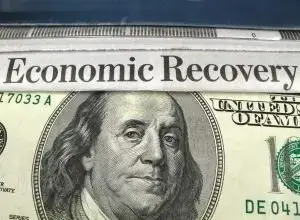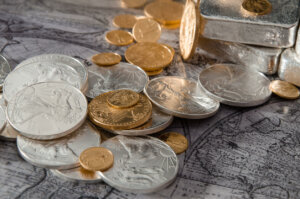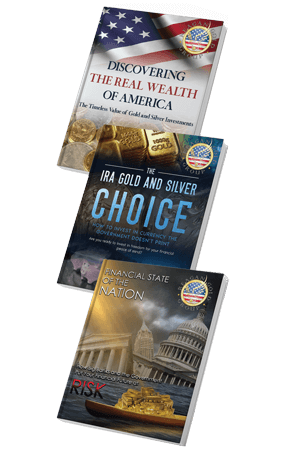In June of 2020, The Federal Reserve (aka the central banks) decided to hold interest rates at near-zero and likely keep rates lowered through 2022 in support of the post-COVID-19 economic recovery. The benchmark rate today is 0%-0.25% (compared to 2.50% a year ago). This news, coupled with May’s unexpected decline in the unemployment rate to 13.3% even amidst the virus aftermath is enough for workers, shareholders, and investors alike to relax a little while working toward a full recovery. In a recent video segment entitled “Federal Reserve Chairman Jerome Powell speaks to reporters on central bank’s latest decision,” even while there is still much unrest and uncertainty about the timeline for our economic comeback due to the pandemic, the Chairman shared a great deal of hope. His positive outlook on jobs, the economy, and the state of the country were reassuring.
The Realities of Our Current Economy
There is certainly no doubt that the pandemic (and media coverage thereof) has impacted the lives of every American and nearly everyone in the world. We are all quite aware of the most significant economic hits. Chairman Powell admitted that the pandemic outbreak was similar in many ways to a natural disaster. He stated that this setback is, in fact, the “biggest economic shock in the US and the world ever. In two months we went from the lowest level of unemployment to the highest level of unemployment in 50 years.” He shared these impacts:
- Indicators of inflation and degrees of uncertainty based on virus containment
- A decline in economic activity that has added to job losses
- Nearly 40 million jobs lost, with a record rise in unemployment
- The virus impacted industries that involve tight groups of people in the service economy
Even given these realities and the fact that “a full recovery is a way out,” Chairman Powell agrees that the economy was in an excellent position to begin with and take such a hit. The Fed has positive goals to help the US economy recover.

The Goal of The Fed
Chairman Powell spoke a great deal about The Federal Reserve’s mission and goals for our country in such a time of crisis. While he agrees the US and world economies have suffered greatly, The Fed has tools to weather this type of unexpected disaster. The message is clear. The Federal Reserve is concerned about the well-being of the economy and the people of our nation. They are committed to using all of the tools possible for our nation to ensure:
- Relief and stability
- A recovery that is as strong as possible
- Limit to lasting damage
- Lowered interest rate (0%-0.25%) that is expected to remain low
- Improvement to our gross domestic product (GDP)
- An inflation rate that remains below the 2% objective
- Maximum employment
- Stable prices for Americans
- Promotion of our financial system
The Fed has “listened” in order to create change to help as needed. They “lowered minimum loan sizes and increased maximum loan sizes – lengthened the maturity and stretched out the repayment schedule; borrowers will get a two-year delay before a principal payment is due along with a one-year delay on interest payments.” As the nation faces much unrest and several social and equality concerns, the fact is The Fed is objectively supportive of the nation, the people, and the world. Chairman Powell indicated, “there is no place for racism anywhere.” All of these assurances bring comfort to many.
A Word About the Stimulus Program
The Chairman said, “The government has been large, fast and forceful.” He believes our pre-existing healthy economy, financial system, and 50-year low unemployment rate have positioned the country well for re-opening and the building of momentum and job growth over time. In terms of the $3 trillion stimulus program, he believes “households, laid-off workers, small, medium and large businesses, hospitals, and state and local governments” benefitted and that the paycheck protection program (PPP) and unemployment benefits have been very innovative. These, coupled with the Fed’s innovations, are ALL making a difference.
A Hopeful Message for Our US Economy
Chairman Powell expressed a positive outlook for our economy based on several recent signs of stabilization since the outbreak of the pandemic in January 2020:
- People going back to work following social distancing protocols
- Businesses re-opening using new guidelines to protect customers and staff
- Stimulus payments and unemployment benefits that seem to be helping
- Inflation is below the 2% objective (weak demand hold down consumer prices)
- Pleasant lending climate going forward
The Federal Reserve monetary policy “is equipped to support the economy.” They continue to study yield-curve control, gain a better understanding of the economy’s trajectory, and streamline how best to deploy tools toward economic goals. Even though the expectation is that we have months, if not years, to recover fully, The Fed believes the economy is re-opening. They “want the markets to be working,” and they “want to get the labor market back.”
Good News for Continued Investments

Now is the time to HEDGE, HEDGE, HEDGE! In this present time of uncertainty in which the value of the US dollar could plummet, some of the world’s smartest investors hedge their portfolios with physical gold and silver. This move helps them maintain purchasing power. When the dollar is at high risk, the central banks quietly increase their withholdings of physical gold on a daily, weekly, monthly, and annual basis. This strategy begs the question, “Why are you not doing the same?” With interest rates are at an all-time low, it means the US dollar is weakened. This creates an inverse (negative) relationship between currencies compared to the higher values of gold and silver. This alternative currency in the form of gold and silver is not printed but rather “organically” grown and mined out of the earth with minimal volume. Currently, the precious metal supply cannot cover today’s demand. Therefore, premiums are increasing rapidly due to shortages. Contact Reagan Gold Group today. Discover your options while this legal tender currency in the form of gold and silver is still available and before premiums increase or supply runs out.









